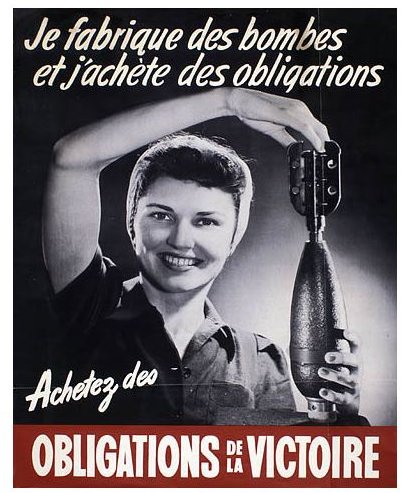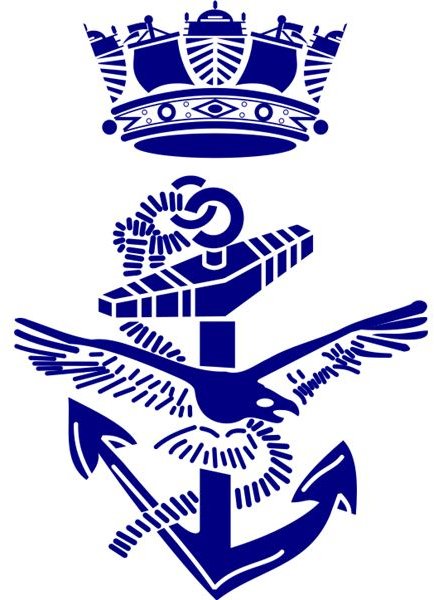Military History of Canada During World War II
The Merchant Navy
T
he merchant navy is not to be confused with the actual naval force that was fighting overseas. The merchant navy was in charge of bringing needed supplies to the marines in war zones. The merchant marines were not obligated to sail the seas or engage in deliveries to war zones, but they did so voluntarily, knowing their ships were primary targets of attack. To minimize casualties, the Royal Canadian Air Force and the Royal Canadian Navy provided air and sea escorts to the merchant marine ships.
During the war, the merchant navy had a total of 12,000 men and women dedicated to bring food, fuel, supplies and packages from home to battle-weary navy and air force men in Italy, Northern Europe and the Atlantic. The merchant marines were the primary target of German submarines, or U-Boats, because disrupting the supply of needed goods would ensure a victory for Germany. Many merchant ships were lost to both submarines and mines.
Facts
Some interesting facts include:
- Canada declared war on Germany on September 10, 1939
- By the end of the war, Canada had the fourth largest air force, and the third largest air force in the world.
- Over 1 million Canadians served in war in various capacities.
- The population of Canada before WWII was less than 12 million people.
- Their involvement lasted six years.
- Over 3,000 Native (aboriginal) people enlisted in the effort and 72 of them were women. 17 of them earned medals for bravery.
- Canada lost close to 43,000 soldiers
- Canadian permanently injured or disabled warriors totaled over 93,000.
- The financial cost to Canada was over $21 million dollars (Canadian)
- Women built bombs and airplanes in factories both in the USA and Canada.
The Canadian contribution of blood and treasure to the war was enormous for a country that was so sparsely populated.
The Pacific

Canada was an effective ally in the WWII to the United States and most Canadian efforts were concentrated in taking down Germany. However Canadians were also involved in combat operations in the Pacific against Japan for a period of 1941 to 1945.
We are all outraged at the fact that the United States created Internment or Concentration camps and imprisoned American citizens after the Pearl Harbor attack simply because of their Japanese ancestry. Very little has been said about Canada doing the same in their country due to their involvement in the Pacific.
Canadians forces were also fighting in Hong Kong to help the British forces protect the island. Hong Kong was attacked by the Japanese on December 7, 1941, before the attack from Japan on Pearl Harbor, from the Japanese forces on the Chinese mainland. The small amount of Canadian troops stationed in Hong Kong was no match for the sheer numbers or Japanese soldiers. Hong Kong surrendered to Japan 18 days after the first attack and out of the 1,975 Canadians, 555 died in horrible conditions in Japanese concentration camps or from wounds inflicted in combat.
The Role of Women

With the men deployed to war, the women had to roll up their sleeves and take over jobs that were previously held by men. The labor force among women grew from 600,000 prior to the war to 1,200,000. These women did the jobs of the men, then went home and took care of their children and their homes.
Women in farmlands took care of the farms by themselves and incorporated into their schedules activities such as canning and knitting socks for the men in uniform. Eventually, all these goods would be delivered by the merchant navy to the war zone. The women lived on food rations and donated perfectly good cookware to be melted and used in the factories that built bombs, vehicles and parts to repair aircraft and ships.
Here are two interesting facts from Veterans Affairs Canada:
“Women who worked with lumberjacks and loggers during the war were called “lumberjills.”
“Canada’s Elsie Gregory McGill was the first woman in the world to graduate as an aeronautical engineer. She worked for Fairchild Aircraft Limited during the war. In 1940, her team’s design and production methods were turning out more than 100 Hurricane combat aircraft per month.”
Women who wanted to be more involved in the war effort demanded that the government create organizations that would allow women to perform duties to benefit the men at war. Almost 4,500 women served as nurses and over 5,000 women served in the army and air force.
The Role of Science
War time required many scientists to create better weapons and fight disease across the world and Canada was no exception. For instance, in trying to find a method to demagnetize ships so they would be able to avoid mines at sea, the technology was later used to locate ore mines from the air during peace time.
The development of anti-corrosion materials is still in use today. Canada developed and patented the first anti-fog liquid that we use today in our vehicles and made the first synthetic furs to be used in protecting their military personnel in sub-freezing temperatures. Another invention was the development of synthetic rubber made of plant-material which began during war time.
It was Canada that developed parachutes made of nylon and, powered milk and eggs which we can find in our grocery stores so many years later. George J. Klein was one of the most famous Canadian inventors; he developed anti-submarine mortars and projectiles.
We hear much about the Battle of Normandy as it pertains to the United States invasion, but we need to know that on June 6, 1944, Canadians lost half of their men on Normandy and got further into France than the United States or the British forces. The battle of Normandy was made of a coalition of forces that included the aforementioned and Polish troops.
There is a cemetery for Canadian soldiers in Normandy called Bény-sur-Mer with 2,049 markers representing the fallen. One notable cross belongs to R. Guenard, a French Resistance soldier with no family that fought and died with Canadian soldiers.
References
- Canada Science and Technology Museum: George J. Klein
- Images: Royal Canadian by Coach.nyta [Public domain], via Wikimedia Commons/ Pacific War Japanese Advancement Map by MacArthur’s General Staff [Public domain], via Wikimedia Commons/ Fabrique de Bombs via Public domain, via Wikimedia Commons
- Canadian Soldiers: The Second World War
